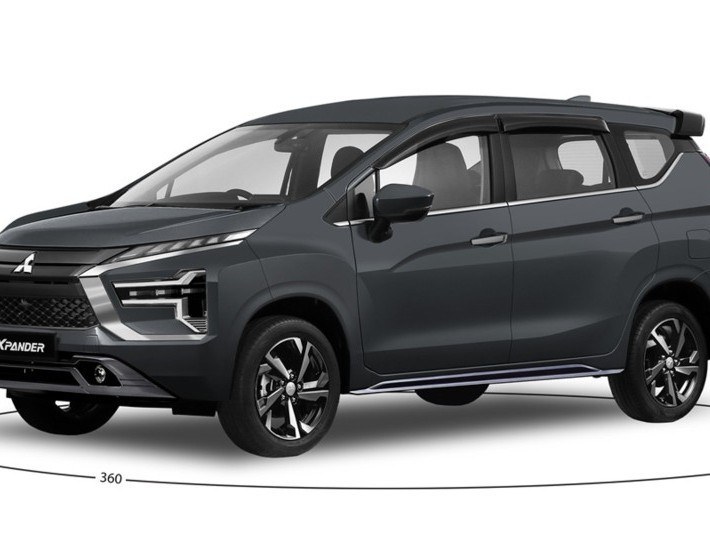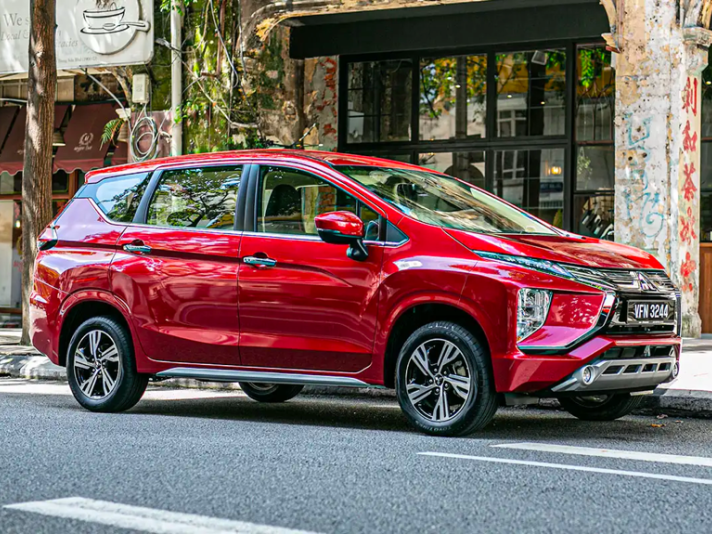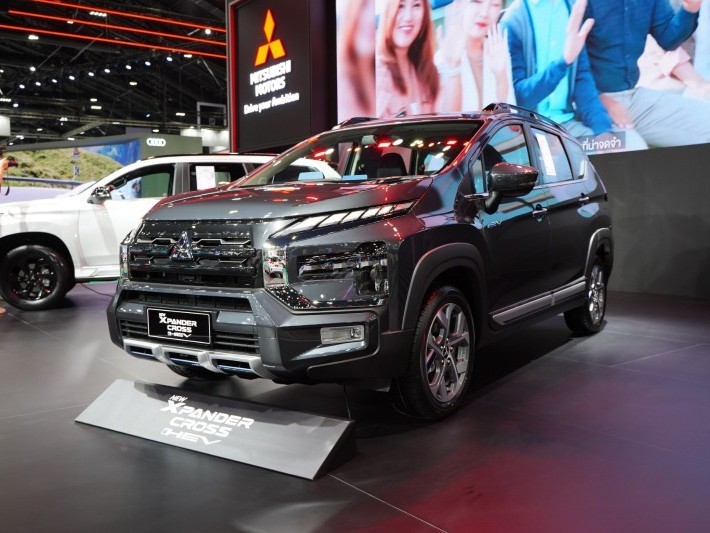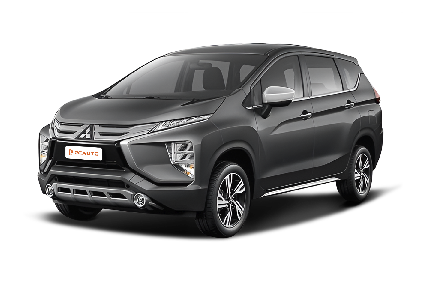Q
What is the Mitsubishi Xpander Engine Oil Capacity?
The engine oil capacity of the Mitsubishi Xpander is approximately 3.7 liters (including the capacity when replacing the oil filter). The specific value may vary slightly depending on the model year or configuration. It is recommended that car owners refer to the vehicle user manual or visit an authorized service center for confirmation. In Malaysia's hot and humid climate, regular oil changes are particularly important for engine protection. It is generally recommended to use 5W - 30 or 10W - 30 viscosity oil with an API SN grade or higher. This type of oil can better adapt to the local high - temperature environment and reduce engine wear. It should be noted that the oil filter should be replaced simultaneously when changing the oil to ensure the filtering effect. If the car owner often drives in congested areas or frequently takes short trips, they may consider shortening the maintenance interval to every 5,000 kilometers or 6 months (whichever comes first). In addition, regularly checking the oil level is also an important part of daily maintenance. It is recommended to measure with the dipstick when the car is cold to ensure that the oil level is between the MIN and MAX marks. For turbocharged models or high - performance versions, specific specifications of fully synthetic oil may be required, and in this case, it is even more necessary to strictly follow the manufacturer's recommendations.
Special Disclaimer: This content is published by users and does not represent the views or position of PCauto.
Related Q&A
Q
What Segment is Mitsubishi Xpander?
The Mitsubishi Xpander belongs to the compact MPV (Multi-Purpose Vehicle) segment in the Malaysian market. It mainly targets family users and consumers who pursue practicality. Its body size falls between the B-Segment and C-Segment. Combining the ground clearance of an SUV with the flexible space layout of an MPV, it's highly suitable for the multi - road - condition family travel needs in Malaysia.
The vehicle is equipped with a 1.5L MIVEC naturally - aspirated engine, paired with either a 4 - speed automatic or a 5 - speed manual transmission to balance fuel economy and daily driving requirements. The three - row, seven - seat layout and foldable seat design further enhance the space's practicality.
In the Malaysian market, the Xpander's competitors include models like the Toyota Avanza and Honda BR - V. However, the Xpander has captured a certain market share thanks to its more stylish exterior design and high cost - performance ratio.
It's worth mentioning that compact MPVs are very popular in Malaysia. These models usually have a relatively high ground clearance to adapt to local road conditions while maintaining a flexible body size for easy city driving. When making a choice, consumers should not only consider space and price but also pay attention to details such as safety configurations like ABS, EBD, and the number of airbags, as these configurations may vary among different brands and models.
Q
What is the Reslae Value of Mitsubishi Xpander?
The Mitsubishi Xpander performs above average in terms of resale value in the Malaysian used car market. The residual value rate of a five - year - old Xpander usually stays between 50% and 60%. Its specific performance depends on factors such as the vehicle's condition, mileage, maintenance records, and market demand. This seven - seat MPV has maintained a stable reputation among family users thanks to its practical space layout and reliable powertrain (1.5L MIVEC engine + 4AT transmission). Additionally, the comprehensive after - sales service network of the Mitsubishi brand in Southeast Asia indirectly supports its used - car market performance.
It's worth noting that the resale value of the Xpander is slightly higher than some of its competitors in the same class but a bit lower than that of leading Japanese brands like Toyota. It is recommended that car owners conduct regular official maintenance and keep complete records. Meanwhile, choosing to install original factory accessories (such as a touch - screen head unit or body kits) can help increase the resale value. If you plan to keep the car for a long time, its durability and low failure rate are also advantages. The continuous demand for seven - seat family cars in the current Malaysian market will further strengthen the Xpander's position in the used - car market.
Q
How Many CC is Mitsubishi Xpander?
The Mitsubishi Xpander is powered by a 1.5-liter naturally aspirated gasoline engine with a displacement of 1,499 cc (cubic centimeters). It has a maximum power output of 105 horsepower and a peak torque of 141 Nm. The engine is paired with either a 5-speed manual or a 4-speed automatic transmission. This engine emphasizes fuel economy and durability, making it ideal for daily use and long-distance driving of Malaysian families. For Malaysian consumers, the 1.5-liter displacement of the Xpander strikes a good balance between power and fuel consumption. It can meet the needs of carrying passengers and cargo without incurring high fuel costs. Additionally, the Xpander features a flexible 7-seater layout and a high ground clearance, making it well-suited for the multi - terrain driving conditions in Malaysia. In the Malaysian market, a 1.5-liter displacement is a common choice for many family MPVs and SUVs. For example, models like the Toyota Avanza and the Perodua Alza are also equipped with engines of similar displacements. When making a purchase, consumers can compare the space configurations and driving experiences of different models to select the one that best suits their needs.
Q
What is the Engine in Mitsubishi Xpander?
The Mitsubishi Xpander is powered by a 1.5-liter MIVEC four-cylinder naturally aspirated gasoline engine, coded as 4A91. This engine adopts Mitsubishi's innovative MIVEC variable valve timing technology, which can deliver 105 horsepower and 141 Nm of torque. It is paired with a 5-speed manual or 4-speed automatic transmission, offering a smooth power delivery and excellent fuel economy, making it highly suitable for city driving in Malaysia and family use. As a 7-seater MPV, the engine of the Xpander is tuned to focus on low-speed torque output, performing reliably when carrying heavy loads or climbing hills. Meanwhile, its maintenance cost is relatively low, meeting the local consumers' demands for practicality and economy. It's worth mentioning that the MIVEC technology can balance power performance and fuel efficiency by optimizing the valve opening timing and lift. This is also one of Mitsubishi's well - developed technologies in the field of small - displacement engines. The engine of the Xpander has been specially tuned to adapt to the hot climate and diverse road conditions in Southeast Asia, and its durability has been proven in the Malaysian market. For daily maintenance, you only need to follow the official recommendations such as regular oil and filter changes.
Q
What is the Gearbox Type of Mitsubishi Xpander?
The Mitsubishi Xpander is equipped with a 4-speed automatic transmission (4AT) in the Malaysian market. This transmission is well - known for its simple structure and low maintenance cost, making it suitable for daily family use and urban commuting. Although it has fewer gears, it is tuned for smooth operation, balancing fuel economy and reliability. For Malaysian users with limited budgets who value practicality, the 4AT has mature technology, adapts well to local road conditions, and has a relatively wide coverage of repair shops.
It's worth noting that competing models in the same class, such as the Toyota Avanza or Honda BR - V, have already adopted CVTs or 6ATs, which theoretically offer a smoother shifting experience and lower fuel consumption. However, Mitsubishi's choice of a conservative strategy might be due to considerations of durability in Southeast Asia's hot and rainy environment.
It is recommended that consumers pay special attention to whether there is obvious jerking at low speeds during test drives and compare the performance of different transmissions on uphill sections. Additionally, they can refer to long - term reliability reports of the Xpander by local Malaysian automotive media.
Q
What is the PCD Size of Mitsubishi Xpander?
The PCD (Pitch Circle Diameter) size of the Mitsubishi Xpander is 5x114.3. This means that its wheels have 5 bolt holes, evenly distributed on the circumference with a diameter of 114.3 millimeters. This specification is quite common among Japanese car models. For instance, the Honda CR-V and the Toyota Fortuner also use the same PCD size. As a result, car owners have a wide range of options when replacing or upgrading their wheels. Understanding the PCD size is crucial for ensuring that the wheels match the vehicle. If the PCD size doesn't match, it may lead to installation difficulties or safety hazards during driving. Additionally, when replacing wheels, other parameters such as the center bore diameter (CB) and offset (ET value) also need to be taken into account to ensure a perfect fit for the vehicle.
For Malaysian car owners, besides size compatibility, local road conditions and climate should also be considered when choosing wheels. For example, in rainy weather, materials with better anti - rust performance should be prioritized. And for those who often drive on rough roads, they need to pay attention to the strength and durability of the wheels.
Q
Does Mitsubishi Xpander Have Apple Carplay?
The latest version of the Mitsubishi Xpander in the Malaysian market does come equipped with Apple CarPlay. This allows iPhone users to more conveniently use apps such as navigation, music, and make calls via the in - car screen, enhancing the driving experience. Besides Apple CarPlay, the Xpander also supports Android Auto, offering wide compatibility and suiting different mobile phone users. This 7 - seater MPV is popular among Malaysian families for its spacious interior and practicality. The addition of smart connectivity features further boosts its competitiveness. It's worth noting that there may be differences in Xpander models of different years or configurations. It is advisable to confirm the specific features with the dealer before purchasing a car. With the development of automotive technology, more and more car models are now standard with mobile phone connectivity functions. This not only provides convenience for users but also reflects the emphasis of car brands on intelligent features. Malaysian consumers can pay more attention to these practical technological configurations when choosing a vehicle, as they can significantly improve the convenience of daily car use.
Q
What is the Tyre Brand of Mitsubishi Xpander?
The original - equipped tire brands of the Mitsubishi Xpander in the Malaysian market vary depending on the model year and configuration. Commonly, there are Japanese brands such as Yokohama or Dunlop. These tires are well - known for their durability and wet - grip performance, making them suitable for the local rainy climate and urban road conditions. The tire specifications are usually 185/65 R15 or 195/55 R16. Car owners can confirm the specific information through the door frame label or the user manual.
It is recommended to regularly check the tire pressure and tread depth to ensure driving safety. If replacement is needed, you can consider brands of the same level, like Michelin or Bridgestone, as they also offer excellent comfort and energy - saving performance. In Malaysia's hot and rainy environment, it's safer to choose tires with a UTQG wear resistance index of over 300 and a wet traction rating of A. Also, pay attention to the tire production date (the last four digits after the DOT mark) to avoid using tires that have been in stock for too long.
Q
Is Mitsubishi Xpander a Good Car? Learn the Pros and Cons Here
The Mitsubishi Xpander, a 7-seater MPV targeting family users, has performed quite well in the Malaysian market. It features a spacious and flexible interior. The second and third-row seats can be folded down to facilitate the loading of large items, making it highly suitable for Malaysian families' weekend getaways or daily use. The powertrain combination of a 1.5L MIVEC engine and a 4AT gearbox may not be extremely powerful, but it excels in smoothness and reliability. The fuel consumption is also average, meeting the expectations for vehicles in this segment.
The Xpander has a ground clearance of 205mm, offering better passability than regular sedans and enabling it to handle some poorly - maintained rural roads in Malaysia. However, the interior of this car mainly uses hard plastics, and the sound insulation is mediocre. Wind noise is quite noticeable when driving at high speeds.
For reference, the Toyota Avanza and Perodua Alza in the same class are also good options. The Avanza has an edge in brand resale value, while the Alza has a more affordable price. It is recommended that potential buyers visit Mitsubishi dealerships for test drives, compare several competing models, and make a choice based on their budget and needs. In Malaysia's hot and rainy climate, it is advisable to choose the version with rear - row air - conditioning vents to enhance the comfort of rear - seat passengers.
Q
What is the Width of Mitsubishi Xpander?
The body width of the Mitsubishi Xpander is 1,750 millimeters. This dimension is considered moderate among 7-seater MPVs in the Malaysian market. It can not only provide spacious seating space but also take into account the flexibility of city driving. As a model specifically designed for Southeast Asian families, the width of the Xpander, combined with a wheelbase of 2,655 millimeters, ensures sufficient legroom for third-row passengers. Meanwhile, a ground clearance of 182 millimeters also enables it to adapt to the diverse road conditions in Malaysia. It's worth noting that the body width directly affects the vehicle's passability on narrow streets and parking convenience. It is recommended that car owners pay attention to the overall width of the vehicle with the rearview mirrors unfolded when parking in shopping malls or old urban areas. Among vehicles in the same class, the Toyota Avanza and the Honda BR-V both have a body width of 1,735 millimeters. The slightly wider design of the Xpander gives it an edge in terms of lateral space, but drivers still need to be aware of the vehicle's body proportions when making turns. When Malaysian consumers are making a purchase, they can consider their daily usage scenarios. If they often carry a full load of 7 people and mainly drive on wide roads, the width of the Xpander can offer a more comfortable riding experience.
Latest Q&A
Q
What is the Gearbox Type of Perodua Nexis?
As an upcoming all-new SUV model, the official details about the transmission type of the Perodua Nexis haven't been released yet. However, based on Perodua's consistent technical approach and market positioning, it's expected to be equipped with a proven D-CVT continuously variable transmission or a 4-speed automatic transmission. These two types of transmissions have been widely used in Perodua's existing models like the Aruz and Bezza. They are particularly suitable for the urban road conditions in Malaysia, balancing fuel economy and a smooth driving experience.
It's worth noting that the D-CVT transmission offers a more direct power response by simulating gear shifts, while the traditional automatic transmission is known for its durability and low maintenance costs. Consumers can choose according to their own driving habits. If the Nexis is positioned as a youthful SUV, more advanced transmission technologies may be introduced to enhance its competitiveness. It is recommended to follow Perodua's official press conference for the final configuration information.
Malaysian consumers can refer to the actual test - drive experience when making a purchase. The transmission tuning has a significant impact on the daily driving comfort. Meanwhile, the transmissions of all Perodua models have been locally adapted to suit the tropical climate and diverse road conditions.
Q
What Engine is used in Perodua Nexis?
The Perodua Nexis is expected to be equipped with a 1.5-liter Dual VVT-i naturally aspirated engine. This engine shares the technical platform with models like the Perodua Ativa and Toyota Rush. It has a maximum output power of about 106 horsepower and a peak torque of 138 Nm. It is paired with a D-CVT transmission, focusing on fuel economy and smoothness in daily driving. The engine adopts a dual variable valve timing system, which can optimize the intake and exhaust efficiency at both low and high speeds and meets the EURO 4 emission standards in the Malaysian market. For Malaysian users who value practicality, this kind of small-displacement engine can balance the fuel consumption during city commuting and the occasional long-distance needs, and the maintenance cost is relatively low. It's worth mentioning that Perodua has gradually upgraded its power technology in recent years. For example, a more efficient 1.0-liter turbocharged option has been applied to models like the Bezza. In the future, it may also offer a hybrid version for the Nexis to adapt to the market trend, but the specific details shall be subject to the official release. The engine design of this kind of compact SUV usually gives priority to durability in tropical climates. It is recommended that car owners conduct regular maintenance to ensure long-term performance.
Q
How much engine displacement of Perodua Nexis?
The Perodua Nexis has not been officially launched yet, so the official has not announced its specific engine displacement (CC) data. However, according to industry speculation, this upcoming B-segment SUV might be equipped with the same 1.0-liter three-cylinder turbocharged engine as the Perodua Ativa. The engine has a displacement of 998cc, a maximum power of 98 horsepower, and a peak torque of 140 N·m, and is paired with a D-CVT gearbox. If the final configuration turns out to be true, this small-displacement turbocharged engine can balance fuel economy and power performance, making it very suitable for the urban road conditions in Malaysia. Meanwhile, Perodua models generally adopt a lightweight design, which further optimizes fuel consumption. It is recommended that consumers keep an eye on the latest news from the official Perodua website or authorized dealers to get accurate information. When making a purchase, Malaysian car owners can also make a horizontal comparison with engines of similar models, such as the 1.5TGDI engine (1477cc) of the Proton X50 or the 1.5L naturally aspirated engine (1498cc) of the Honda HR-V. However, they need to pay attention to the differences in road tax, insurance, and maintenance costs among engines with different displacements.
Q
Which Segment Does Perodua Nexis Belong to?
The Perodua Nexis falls into the B-Segment SUV category. This vehicle is positioned slightly higher than the Axia and Bezza in Perodua's product line. It mainly targets young family users who pursue space practicality and stylish design. The body size of the Perodua Nexis is expected to be similar to that of the Proton X50, but its price will be more affordable, continuing Perodua's characteristic of high cost - effectiveness.
B - Segment SUVs are very popular in the Malaysian market. Vehicles in this category usually have a relatively high ground clearance and flexible cabin space, which are suitable for the diverse local driving environments, including urban commuting and occasional countryside trips.
The Perodua Nexis is expected to be equipped with an energy - efficient 1.5L Dual VVT - i engine and may come with advanced safety systems such as ASA 3.0, continuing the brand's tradition of emphasizing fuel economy and safety.
For Malaysian consumers, B - Segment SUVs are a popular choice that combines practicality and a sense of trend. With its mature local production and a well - established after - sales service network, Perodua can often provide solutions that better meet local needs.hts.
Q
What is the Nissan Almera Specs? Here's the Full Specifications
The Nissan Almera is a highly popular Class B sedan in the Malaysian market. The latest model is equipped with a 1.0-liter three-cylinder turbocharged engine, delivering a maximum output of 100PS and a torque of 152Nm. It's paired with a CVT transmission and has a fuel efficiency of 5.1L/100km (NEDC standard). The vehicle's dimensions are 4,495mm (length) x 1,740mm (width) x 1,460mm (height), with a wheelbase of 2,620mm, offering generous rear - legroom.
In terms of safety features, it comes with 6 airbags, a Vehicle Dynamic Control (VDC) system, and a rear - view camera. The high - end version is also equipped with a 360 - degree surround - view camera and a blind - spot monitoring system. Inside the cabin, there is an 8 - inch touchscreen that supports Apple CarPlay and Android Auto, and an intelligent key system comes as standard.
The Almera adopts Nissan's latest V - Motion signature design language. The LED headlights and the floating roof design add a touch of modern style. This car is particularly well - suited for the urban driving environment in Malaysia. The small - displacement turbo engine can output high torque at low RPMs, making it ideal for stop - and - go traffic. Meanwhile, the relatively low fuel consumption and road tax also ease the long - term burden on car owners.
Among its competitors in the same class are the Honda City and the Toyota Vios. However, the Almera has distinct advantages in terms of power performance and technological features.
View MoreRelated News

Mitsubishi Xpander On-Road Price: The Complete Pre-Purchase Guide
JamesApr 9, 2025

Mitsubishi Xpander Redesign: 4AT+1.5L Power Dated, Only 2 Safety Airbags!
JohnSep 24, 2024

Mitsubishi Xpander: Priced at RM 100,980, a perfect combination of comfort, spaciousness and fashion
LienMay 30, 2024

Bangkok Motor Show: MITSUBISHI XPANDER CROSS priced at 946,000 Thai Baht
Kevin WongMar 26, 2024

Mitsubishi brings Xpander and Xpander Cross HEV models to 2024 Bangkok International Motor Show
AshleyMar 18, 2024
View More
















Pros
Cons